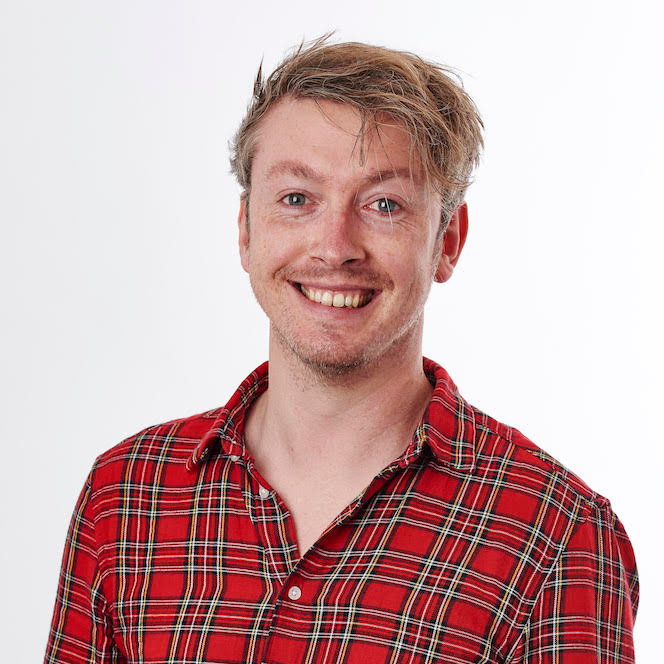SkyView 2 is the perfect dorm room lamp for improved sleep and work-time concentration
NASA research fuels a smart and attractive connected lighting option.

Between the blue light from our screens, the notifications from our phones and the general pace of modern-connected-everything life, getting a good night's sleep or settling down to focus and concentrate on some important work can be very difficult.
These sliding scales of attentiveness and tiredness are in part defined by circadian rhythms, 24 hour cycles that humans have evolved to respond to, based on natural light patterns. It’s why you’re more likely to feel sleepy in a dimly-lit cinema room than watching a movie in your brightly-lit living room, or feel more ready to get to work at a desk sat next to a window flooded with daylight than in a pokey corner of a basement office.
The SkyView 2 lamp from BIOS Lighting looks to captialize on these principles to help improve your sleep and concentration levels, making it a great dorm-room addition for any student struggling to get up in time for their lectures, or unable to find the focus to complete their assignments.
- Want more recommendations for the student in your life? Check out iMore's Ultimate Back to School Guide
NASA-inspired lighting
Designed by BIOS Lighting Chief Scientist and co-founder Robert Soler, the former NASA expert on the effects of circadian lighting (an important factor for anyone living for months on end in space stations) knows how to harness light for wellness purposes.

An egg-like orb on a circular black base, the SkyView 2 stands about 12 inches tall and slowly changes color over the course of the day, based on where you’re situated in the world to match the sunrise and sunset times of your location. Designed to be left on all day long, at sunrise the SkyView 2 glows a purple color, during daytime it turns a mix of sky-blue and white to mimic daylight, at sunset it begins to transition to an orange glow, an evening amber, and then while at nighttime turning to a deeper almost-red color as its brightness drops.

Connecting to your iPhone and the accompanying SkyView app over Wi-Fi 2.4GHz and Bluetooth, registration with the SkyView servers will automatically set the lamp to your local sun schedule, and automatically populate a year-round timetable for you. You can of course tweak these to better suit your personal wake and sleep times too, while there are in-app presets to override the schedule for ‘Sleeping’, ‘Reading’, ‘Relaxing’ and ‘Working’ lighting settings best suited to those activities. A single button/dial on the base also lets you switch off the lamp, tweak pairing settings, and dial down brightness manually.
The SkyView effect
The SkyView 2 is intended to be placed where you’re most likely to spend the majority of your time during the day, which can make using the slumber-inducing sunset settings a bit awkward, as you’re probably most likely to set up the lamp in a home office or living room. To get the full effect you may have to get used to unplugging the SkyView 2 and moving it around during the day. A dorm room where these two spots may effectively be the same place seems an ideal location, then.
iMore offers spot-on advice and guidance from our team of experts, with decades of Apple device experience to lean on. Learn more with iMore!

But whether you’re using it in a bedroom or an office, the SkyView 2 achieves its desired effects. It led to a much more gentle wake up than going from pitch-black-shutters-drawn in my bedroom to ceiling lights on — well, at least it did when I manually tweaked the default sunrise brightness. The SkyView 2 can glow incredibly bright! Bright enough, even to light a small room by itself.
As such, it’s perfect for working alongside. Its daylight setting is a good mimic of outside, natural lighting, and I certainly felt more alert in its presence.
It’s a good looking lamp, too — BIOS Lighting deserves extra praise for how the SkyView 2’s LED lights gradually change inside its lamp bowl, mixing and merging subtly like ink in a glass of water. It makes for a good statement piece even if you’re not looking to take advantage of its wellness credentials.
There is room for improvement though — the app isn’t all that intuitive, including references for Alexa support that isn’t ready yet, and somewhat buries the schedule-tweaking screens. It’d also be fun to create some custom lighting presets with the hues available — though that’d naturally render the sun scheduling core of the light obsolete.

Then there’s the price — it’s expensive at $499.99, while a ‘Pro’ version of the SkyView 2 costs $949.99 with its hand blown glass dome and taller stand. That Pro version is simply prohibitively expensive.
But there’s no denying how attractive the SkyView 2 is — nor the fact that, in my experience at least, its core concept works. I feel ready for action when working alongside it, and ready to rest as it winds down for the night. If your day-to-night cycle needs a boost, it’ll be worth every penny.

Gerald Lynch is the Editor-in-Chief of iMore, keeping careful watch over the site's editorial output and commercial campaigns, ensuring iMore delivers the in-depth, accurate and timely Apple content its readership deservedly expects. You'll never see him without his iPad Pro, and he loves gaming sessions with his buddies via Apple Arcade on his iPhone 15 Pro, but don't expect him to play with you at home unless your Apple TV is hooked up to a 4K HDR screen and a 7.1 surround system.
Living in London in the UK, Gerald was previously Editor of Gizmodo UK, and Executive Editor of TechRadar, and has covered international trade shows including Apple's WWDC, MWC, CES and IFA. If it has an acronym and an app, he's probably been there, on the front lines reporting on the latest tech innovations. Gerald is also a contributing tech pundit for BBC Radio and has written for various other publications, including T3 magazine, GamesRadar, Space.com, Real Homes, MacFormat, music bible DIY, Tech Digest, TopTenReviews, Mirror.co.uk, Brandish, Kotaku, Shiny Shiny and Lifehacker. Gerald is also the author of 'Get Technology: Upgrade Your Future', published by Aurum Press, and also holds a Guinness world record on Tetris. For real.
